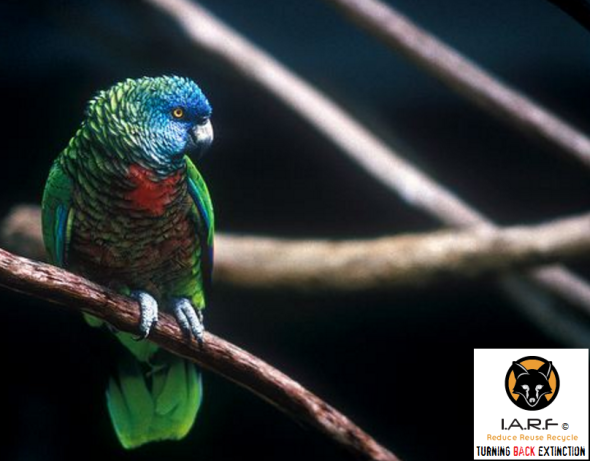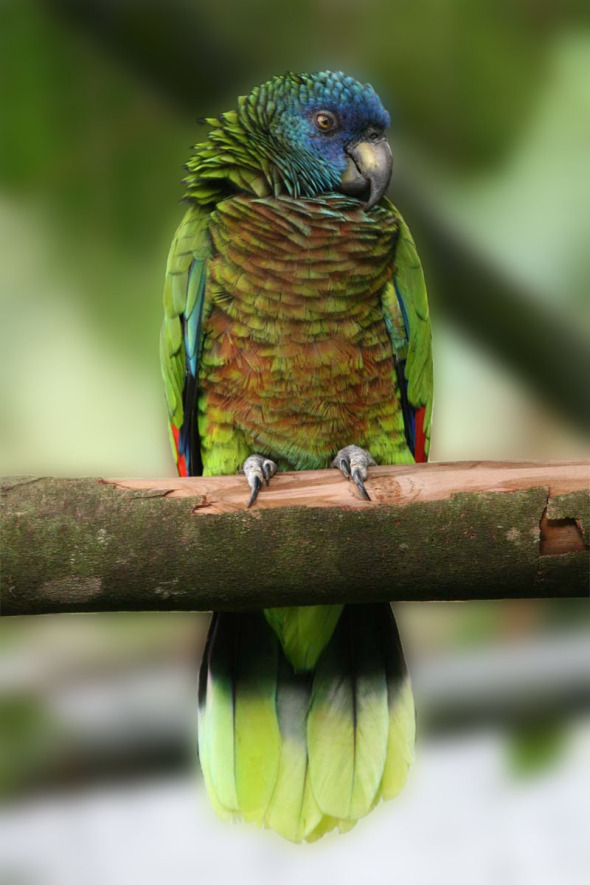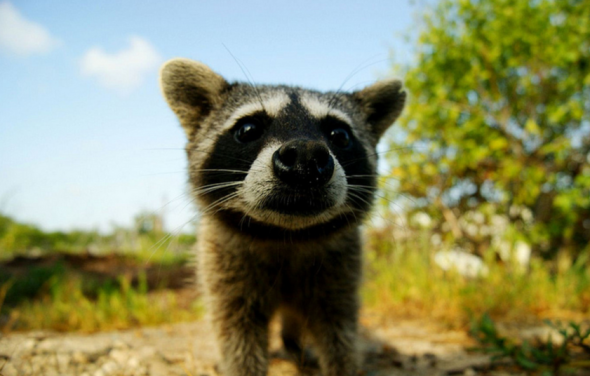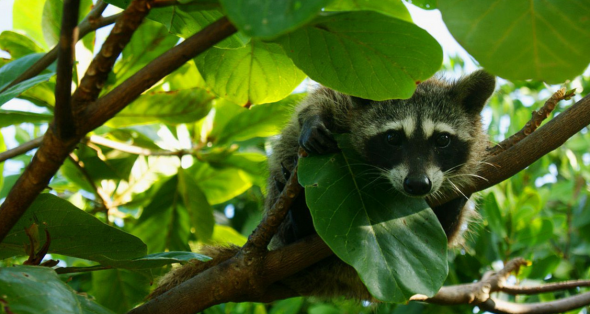Endangered Species Friday: Amazona versicolor
Endangered Species Friday: Amazona versicolor
This Fridays Endangered Species Post (ESP) I touch up briefly on the St Lucia Amazon as the species is commonly known. Image credits Philippe Feldman
The species was identified back in 1776 by Dr Philipp Ludwig Statius Müller (April 25, 1725 – January 5, 1776) who was a German zoologist. Dr Statius Müller was born in Esens, and was a professor of natural science at Erlangen. Between 1773 and 1776, he published a German translation of Linnaeus’s Natursystem.
The supplement in 1776 contained the first scientific classification for a number of species, including the dugong, guanaco, potto, tricolored heron, umbrella cockatoo, red-vented cockatoo, and the enigmatic hoatzin.
Dr Muller was also an entomologist. Müller died in Erlangen. He is not to be confused with Salomon Müller (1804–1864), also an ornithologist, or with Otto Friedrich Müller. Note that the family name is actually spelled without the umlaut, then and now.
The Saint Lucia Amazon is listed as (vulnerable) which was nearing (endangered), native to Saint Lucia. From 1988 the species was first listed as (near threatened), however, unfortunately from 1994-2016 the species was re-listed as (vulnerable). Locals commonly refer to the species as the; Saint Lucia Amazon, or the Saint Lucia Parrot.
Populations are considered to be extremely low, although now allegedly increasing. A decade ago the then current known population rate stood at some 350-500 individuals, this generally equates to some 230-330 ‘mature individuals’. This number was actually considered quite low for any species which technically should see the St Lucia listed as (critically endangered).
St Lucia Amazon Parrot is situated on the island of St Lucia in the eastern Caribbean where it is known locally as ‘Jacquot’. The Government of the island became aware of the plight of its endemic parrot population in 1975 when Durrell first became involved with St Lucia, and the Trust was asked to help by starting a captive breeding programme for the species at its Jersey headquarters. In 1989 a pair of captive-bred parrots returned to their native home with the Prime Minister of St Lucia.
The St Lucia Amazon’s natural habitat is subtropical or tropical moist montane forest, diet consists of fruit and insects, of which clutch size is around 3-4 eggs. The species is threatened by habitat loss. St Lucia Amazon species have declined from around 1000 birds in the 1950s to 150 birds in the late 1970s. At that point a conservation program began to save the species, which galvanized popular support to save the species, and by 1990 the species had increased to 350 birds.
Although the population in Saint Lucia is small it is still expanding. To date after conservation efforts increased on the island of St Lucia due to destructive storms and hurricanes populations were increased to some 2,100 mature individuals. Please see video below.
The story of this birds salvation from the brink of extinction (including the influence of conservationist Paul Butler) is told in Chapter 7 of the 2010 book “Switch: How to Change Things When Change is Hard” by Chip & Dan Heath.
Listed on Cites Appendix I and II, below I’ve included a list of identified threats associated with the St Lucia Amazon Parrot.
MAJOR THREATS
The human population of St Lucia is growing at a considerable rate, increasing pressure on the forest and resulting in habitat loss. Selective logging of mature trees may significantly reduce breeding sites, and hurricanes, hunting and trade pose further threats. There have been recent efforts to lift the moratorium on hunting within forest reserves, which would seriously threaten this species.
Image: St Lucia Amazon
Its truly wonderful to know that conservation efforts have brought this species back from the brink of near extinction. The Durrell Wildlife Conservation Trust is one trust that I admire, and have donated many hundreds of euros to since I was a teenager. Durrell have worked wonders across the globe working to help primates, frogs and countless birds, not forgetting many other animals..
The Durrell Wildlife Conservation Trust is one NGO that I myself will be leaving money to in my will. Why? Because they deserve the money for the work they put into preserving our flora and fauna. You can donate to the Durrell Wildlife Conservation Trust here: https://www.durrell.org/wildlife/shop/donation/
Thank you for reading and have a nice day.
Dr Jose C. Depre PhD. MEnvSc. BSc(Hons) Botany, PhD(NeuroSci) D.V.M.
Chief Environmental and Botanical Scientist.
Follow me on Twitter here: https://twitter.com/josedepre11
Facebook: https://www.facebook.com/InternationalAnimalRescueFoundationAfrica/?fref=ts
Endangered Species Monday - Procyon pygmaeus
Endangered Species Monday - Procyon pygmaeus
This Monday’s endangered species article I write about a species that I have honestly never even heard of or had the pleasure of meeting. Listed as critically endangered, the species is commonly known as the Pygmy Raccoon or scientifically known as Procyon pygmaeus. (Image: Pygmy Raccoon)
Identified back in 1901 by Dr Clinton Hart Merriam (December 5, 1855 – March 19, 1942), Dr Merriam was an American zoologist, ornithologist, entomologist, ethnographer, and naturalist. Known as “Hart” to his friends, Merriam was born in New York City in 1855. His father, Clinton Levi Merriam, was a U.S. congressman.
Dr Merriam studied biology and anatomy at Yale University and obtained an M.D. from the School of Physicians and Surgeons at Columbia University in 1879. He taught for a while at Harvard University. Dr Merriam died in Berkeley, California in 1942. I have followed quite a lot of work relating back to Dr Merriam and must say Dr Merriam was one of very few experts of his type within the field of animal studies as we know it.
From 1996 the Pygmy Raccoon that’s known to the locals as the “Cozumel Raccoon” was listed as endangered back in 1996. Endemic to Mexico, Pygmy Raccoon’s are only known to inhabit the Cozumel region off the coast of the Yucatan Peninsula, Mexico, hence the carnivores name - “Cozumel Raccoon”.
Recent census counts taking into consideration juveniles gives us an (estimated) population at a depressingly two hundred and fifty mature individuals. However fifty nine per cent of the population actually corresponds to mature individuals which is somewhat concerning, especially when we really need more younger juveniles to continue the gene pool and to ensure that overall protection of the species is to a degree somewhat safe should an outbreak of disease occur.
Taking all data - past - and - present census counts, NEAR exact population size of juveniles we’re still not looking at a high number of individuals however can state that overall population sizes are 192-567 individuals. Due to low population densities, introduction of new species onto the island and the effects of mega-hurricanes this provides environmental scientists justification to place the species at (critically endangered level/criteria).
Due to continuing decline of population sizes with regards to increasingly destructive hurricanes, introduction of new species onto the island, extent of occurrence being in the region of some 500km2, less than five locations the species is known to inhabit on the island the Pygmy Raccoon thus meets the criteria for (endangered listing). Overall and taking both reports into account the species qualifies for critically endangered listing.
Exact location; Cozumel Island (478 km2) off the coast of the Yucatan Peninsula, Mexico.
Image: Mexico - Pygmy Raccoon.
Back in 2004 a further census was undertaken by Mr McFadden that estimated a near total of some 954 mature individuals (including juveniles). However due to some pretty intense hurricanes and new taxa introduced to the island species populations are still taking a pretty fast downward spiral of which its populations are still noted as (declining).
Due to the species being severely impacted by hurricanes and already depressed populations from a variety of human threats make it increasingly difficult for populations to recover following natural disasters it quite likely were going to witness extinctions occurring very soon. After major hurricanes, the density of Pygmy Raccoon’s can decline at a particular site by as much as 60% and the proportion of juveniles in the population can diminish significantly. The impact of hurricanes may vary among regions or vegetation types on the island.
The species is not legally protected and there are no protected areas on Cozumel Island. Proposed conservation measures include protecting areas inhabited by this species, establishing captive breeding programs, and controlling introduced species. However even with these protective measures in place - we can already state local NGO’s and zoological gardens are expecting the species to be pushed into extinction within the wild due to the fact captive breeding programs are being thought up.
Relatively little is known about the group size of the Raccoon’s. They are primarily nocturnal and solitary animals, but may sometimes form family groups possibly consisting of the mother and cubs. The Raccoon’s live in densities of about 17-27 individuals per km2., and inhabit home ranges of around 67 hectares (170 acres) on average. However, individuals do not appear to defend territories to any great extent, and their close relative, the common raccoon, can exist at very high densities when food is abundant. Although there have been no detailed studies of their reproductive habits, females seem to give birth primarily between November and January, possibly with a second litter during the summer months.
Threats
While legally protected within Mexico threats are still increasing that do look set to push the species into complete wild extinction.
Cozumel Island has been substantially developed for tourism. Cozumel is still relatively well-conserved, with close to 90% of the island covered by natural vegetation, but the situation is deteriorating rapidly. The interior of the island is less developed, but Raccoon’s are rare or absent there. There is only a very small area of prime raccoon habitat and this is on the coast where most of the tourist development is taking place.
The expansion and widening of the road system is fragmenting the vegetation of the island in at least three areas. The widening of roads is potentially increasing their barrier effect and exacerbating their impact on the conservation of Pygmy Raccoon’s and other native species.
Most cases of Pygmy Raccoon mortality documented since 2001 have been the result of animals being run over by cars on the island’s highways. Alien invasive predators, such as Boa constrictor, as well as domestic and feral dogs, may have an important impact on the Pygmy Raccoon population and it is confirmed that feral dogs predate on them.
Additionally, introduced carnivores to the island could easily become a source of parasites and pathogens that could potentially affect negatively Pygmy Raccoon populations. The introduction of congeners from the mainland (P. lotor), usually for pets, is a risk of genetic introgression and a potential source of parasites and pathogens.
Hurricanes are the main natural threat recognized for the Cozumel biota. In the case of the Pygmy Raccoon, hurricanes cause drastic population decline, reduction in the proportion of juveniles, and cause injury and facilitate pathological change. The frequency, magnitude and duration of hurricanes in the Caribbean Basin is increasing (CITA), so they are an issue of major concern as there may be a synergistic effect with anthropogenic disturbance.
Hunting and collection of Pygmy Raccoons as pets is currently not an important threat.
Thank you for reading.
Dr. J.C Depre
Environmental and Botanical Scientist. CEO






